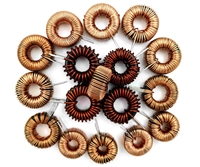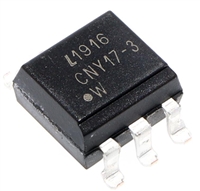CY7C1510JV18, CY7C1525JV18
CY7C1512JV18, CY7C1514JV18
Pin Definitions
Pin Name
IO
Pin Description
Data Input Signals. Sampled on the rising edge of K and K clocks during valid write operations.
D[x:0]
Input-
Synchronous CY7C1510JV18 − D[7:0]
CY7C1525JV18 − D[8:0]
CY7C1512JV18 − D[17:0]
CY7C1514JV18 − D[35:0]
WPS
Input-
Write Port Select − Active LOW. Sampled on the rising edge of the K clock. When asserted active, a
Synchronous write operation is initiated. Deasserting deselects the write port. Deselecting the write port ignores D[x:0]
.
NWS0,
NWS1
Input-
Nibble Write Select 0, 1 − Active LOW (CY7C1510JV18 Only). Sampled on the rising edge of the K
Synchronous and K clocks during write operations. Used to select which nibble is written into the device during the
current portion of the write operations. Nibbles not written remain unaltered.
NWS0 controls D[3:0] and NWS1 controls D[7:4].
All the Nibble Write Selects are sampled on the same edge as the data. Deselecting a Nibble Write Select
ignores the corresponding nibble of data and it is not written into the device.
BWS0,
BWS1,
BWS2,
BWS3
Input-
Byte Write Select 0, 1, 2, and 3 − Active LOW. Sampled on the rising edge of the K and K clocks during
Synchronous write operations. Used to select which byte is written into the device during the current portion of the write
operations. Bytes not written remain unaltered.
CY7C1525JV18 − BWS0 controls D[8:0].
CY7C1512JV18 − BWS0 controls D[8:0] and BWS1 controls D[17:9].
CY7C1514JV18 − BWS0 controls D[8:0], BWS1 controls D[17:9], BWS2 controls D[26:18] and BWS3 controls
D[35:27].
All the Byte Write Selects are sampled on the same edge as the data. Deselecting a Byte Write Select
ignores the corresponding byte of data and it is not written into the device.
A
Input-
Address Inputs. Sampled on the rising edge of the K (read address) and K (write address) clocks during
Synchronous active read and write operations. These address inputs are multiplexed for both read and write operations.
Internally, the device is organized as 8M x 8 (2 arrays each of 4M x 8) for CY7C1510JV18, 8M x 9
(2 arrays each of 4M x 9) for CY7C1525JV18, 4M x 18 (2 arrays each of 2M x 18) for CY7C1512JV18,
and 2M x 36 (2 arrays each of 1M x 36) for CY7C1514JV18. Therefore, only 22 address inputs are needed
to access the entire memory array of CY7C1510JV18 and CY7C1525JV18, 21 address inputs for
CY7C1512JV18, and 20 address inputs for CY7C1514JV18. These inputs are ignored when the appro-
priate port is deselected.
Q[x:0]
Output-
Data Output Signals. These pins drive out the requested data during a read operation. Valid data is
Synchronous driven out on the rising edge of the C and C clocks during read operations, or K and K when in single
clock mode. When the read port is deselected, Q[x:0] are automatically tri-stated.
CY7C1510JV18 − Q[7:0]
CY7C1525JV18 − Q[8:0]
CY7C1512JV18 − Q[17:0]
CY7C1514JV18 − Q[35:0]
RPS
Input-
Read Port Select − Active LOW. Sampled on the rising edge of positive input clock (K). When active, a
Synchronous read operation is initiated. Deasserting deselects the read port. When deselected, the pending access is
allowed to complete and the output drivers are automatically tri-stated following the next rising edge of
the C clock. Each read access consists of a burst of four sequential transfers.
C
C
K
K
Input Clock Positive Input Clock for Output Data. C is used in conjunction with C to clock out the read data from
the device. Use C and C together to deskew the flight times of various devices on the board back to the
controller. See Application Example on page 9 for further details.
Input Clock Negative Input Clock for Output Data. C is used in conjunction with C to clock out the read data from
the device. Use C and C together to deskew the flight times of various devices on the board back to the
controller. See Application Example on page 9 for further details.
Input Clock Positive Input Clock Input. The rising edge of K is used to capture synchronous inputs to the device
and to drive out data through Q[x:0] when in single clock mode. All accesses are initiated on the rising
edge of K.
Input Clock Negative Input Clock Input. K is used to capture synchronous inputs being presented to the device and
to drive out data through Q[x:0] when in single clock mode.
Document #: 001-14435 Rev. *C
Page 6 of 26
[+] Feedback










 压敏电阻器在直流电路中的过压保护应用探讨
压敏电阻器在直流电路中的过压保护应用探讨

 电感耐压值及其与电感大小的关系
电感耐压值及其与电感大小的关系

 CNY17F光耦合器:特性、应用、封装、引脚功能及替换型号解析
CNY17F光耦合器:特性、应用、封装、引脚功能及替换型号解析

 DS1307资料解析:特性、引脚说明、替代推荐
DS1307资料解析:特性、引脚说明、替代推荐
